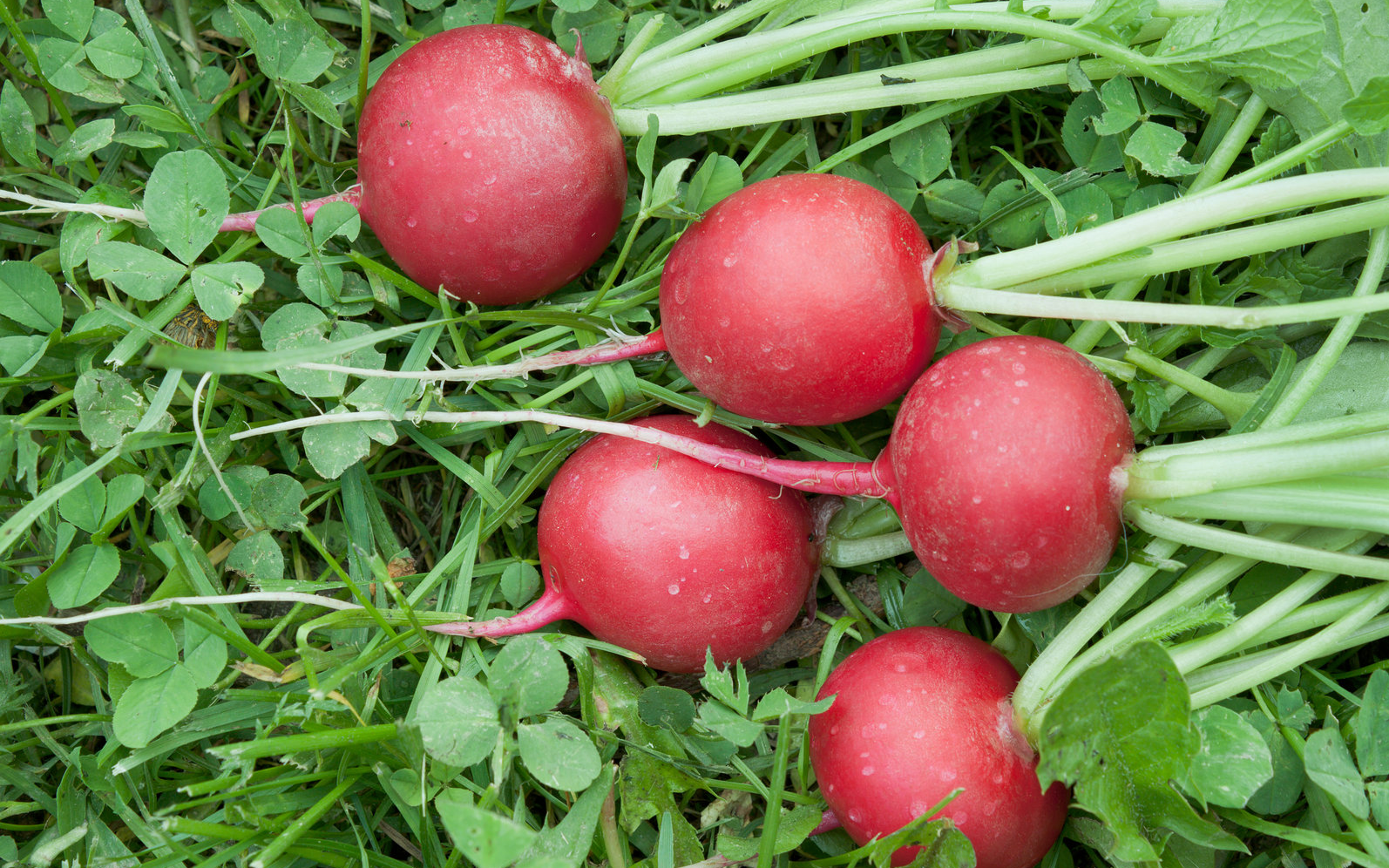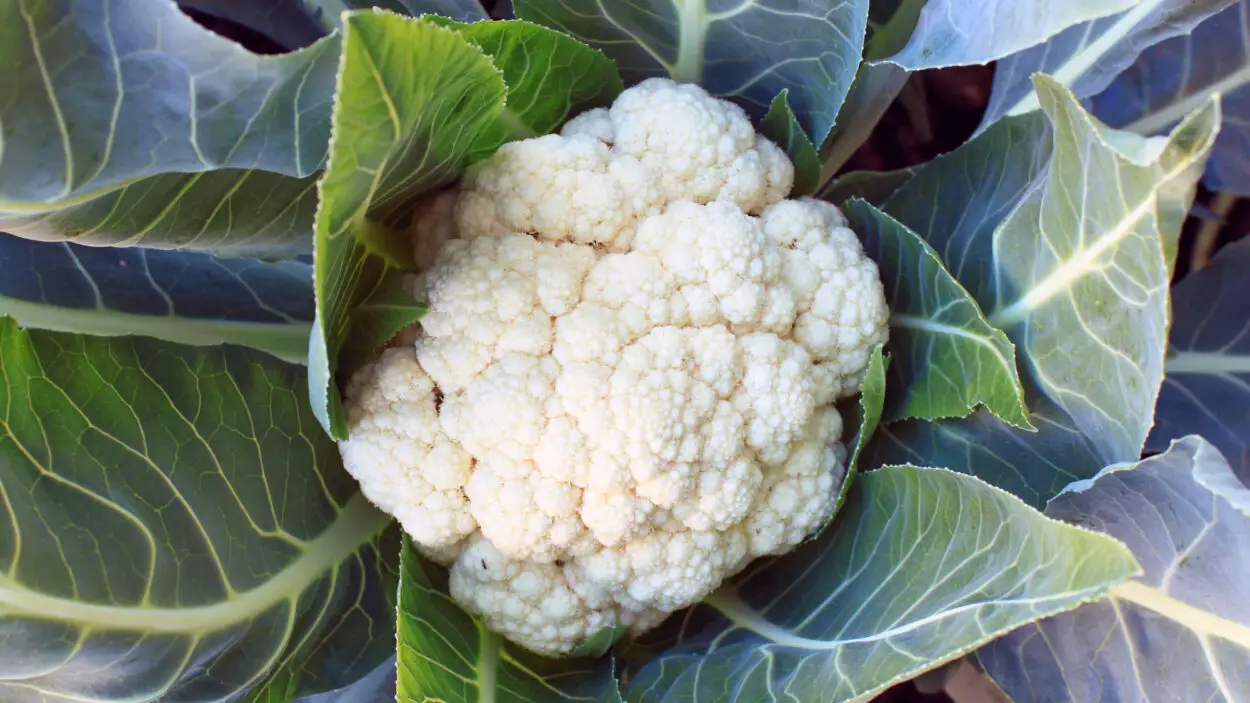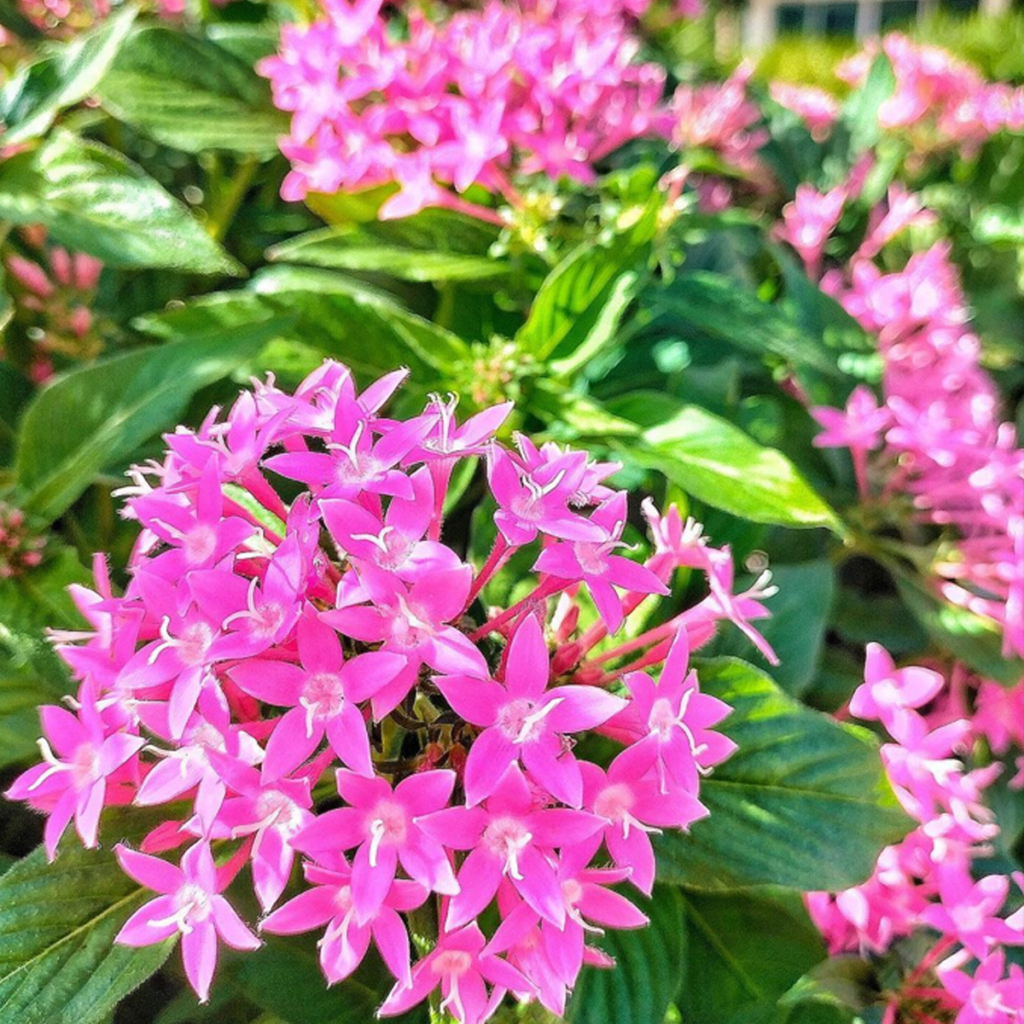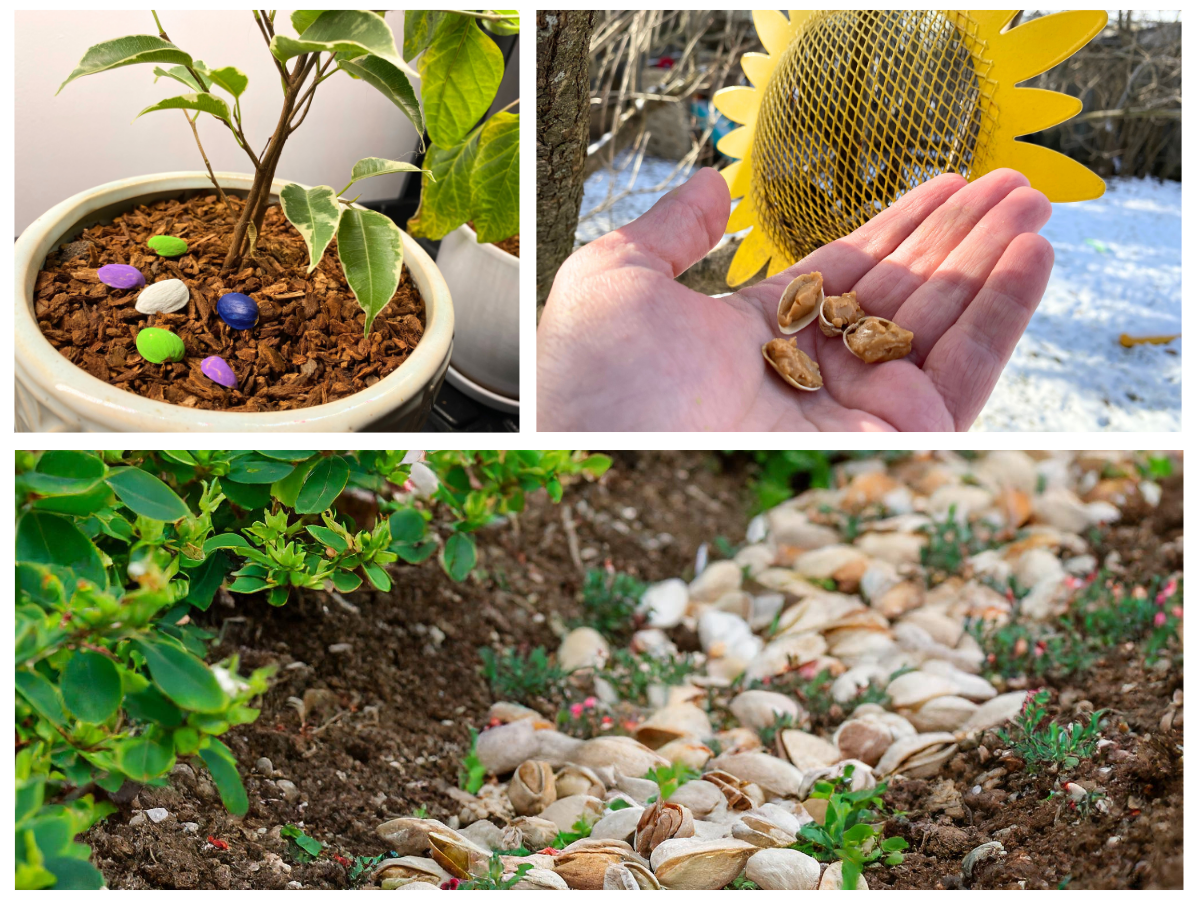12 Flowers to Plant That Bloom All Summer to Grow This Year

There’s a lot to love about summer. The days are longer. The weather’s warmer and if you’re anything like me, you’re excited to spend more time outside tending to your garden and enjoying the fruits (and vegetables) of your labor.

If you’re a gardening enthusiast or simply looking to add some color and beauty to your outdoor space this summer, then you’ll want to see my list of the top 12 summer flowers to grow this year.
Let’s dig in!
1. Garden Phlox (Phlox paniculata)

If you’re looking for the best flowers to plant that will bloom all season long, look no further than the Garden Phlox. This is a gorgeous, vibrant flower that commonly comes in shades of pink and lavender. However, Garden Phlox can also be white and even a sunny salmon color.
In addition to their gorgeous hue, Garden Phlox also attract butterflies and hummingbirds, making them an excellent addition to your garden bed.
These colorful flowers typically bloom in mid to late summer but can bloom as early as mid-fall, as well. They prefer partial to full sunlight, neutral pH soil level, and need soil that is well-draining. You can either buy soil that is already well-draining, or add a few small pebbles to your garden bed.
Even though Garden Phlox can tolerate summer heat, they don’t do well with extreme humidity. So, if you reside anywhere in the South, this may not be the best flower to add to your garden. However, if you reside on the East Coast, it’s the perfect flower to add some vibrant color to your garden.
| Botanical Name: | Phlox paniculata |
| Growth Rate: | 2-3′ tall |
| Native Range: | Native to the Eastern United States |
| Hardiness Zones: | 4-8 |
| Dangers: | Non-toxic; safe for humans and wildlife |
| Soil Needs: | Moist, fertile soil with sufficient drainage |
| Tolerate: | Partial-full sun, but can tolerate most lighting conditions |
| Ease of Care | Low maintenance |
| Diseases | Leaf spot, Erysiphe cichoracearum, Ditylenchus dipsaci |
| Propagation | Divide the plants in early spring; results in 3-4 weeks |
| Fertilizer | 10-10-10 nitrogen, phosphorous, and potassium every 10-14 days |
| Pests | Tetranychus urticae (twospotted spider mite) |
| Blooming Period | Summer to mid-fall |
| Pruning | 1″ when first planted, 4-6″ when it starts budding |
| Water needs: | 1″ of water a week during the growing season |
2. Perennial Geranium (Geranium bohemicum)

When you think of a classic summer flower, chances are you think of Perennial Geraniums. These summer bloomers are low-maintenance red, purple, and white flowers that will pop up every year once planted in your summer garden. In other words, they’re a perennial, which means that they will bloom for more than one growing season, as long as they’re taken care of.
Perennial Geraniums do best in either full or partial shade, as well as in a well-draining soil. If you want some plant variety of summer, the Perennial Geranium offers you the best options. Here’s how to care for your flowers as well:
| Botanical Name: | Geranium bohemicum |
| Growth Rate: | 6-36′ tall and up to 3′ wide |
| Native Range: | Southern Africa and all temperate locations worldwide |
| Hardiness Zones: | 3-9 |
| Dangers: | None |
| Soil Needs: | Medium moisture, well-draining soil |
| Tolerate: | Partial to full sun, depending on the variety |
| Ease of Care | Easy, maintenance |
| Diseases | Botrytis Leaf Blight, Rhizoctonia Root, Root Rot |
| Propagation | Divide the roots in spring or autumn |
| Fertilizer | Fertilizer not required, but you can use a 10-10-10 fertilizer, if preferred |
| Pests | Geranium Budworms, aphids, |
| Blooming Period | Spring-fall, depending on the variety |
| Pruning | Trim approx. 2″ above the soil and at the nodes between August and October |
| Water needs: | Water when soil is dry |
3. Hydrangea (Hydrangeaceae)

If you’re looking for a low light perennial flower to add to your garden, look no further than the Hydrangea.
Hydrangeas come in a wide variety of colors, including pink, white, green, and blue. Interestingly enough, the colors these flowers come in depend on the acidity level of the soil. The more alkaline the soil is, the brighter the flower head will be (i.e. pink and white). Once in bloom Hydrangeas can be brought inside for weeks at a time.
| Botanical Name: | Hydrangeaceae |
| Growth Rate: | Up to 15′ tall |
| Native Range: | North and South Americas, Asia |
| Hardiness Zones: | 5-9 |
| Dangers: | Toxic to humans and wildlife |
| Soil Needs: | Well-draining soil with compost and/or organic matter |
| Tolerate: | Partial to full sun |
| Ease of Care | Low-maintenance |
| Diseases | Botrytis blight, brown leaf spotting |
| Propagation | Propagate in early fall; stems should be light green and at least 6-8″ long |
| Fertilizer | Not required. If fertilizer is used, avoid using too much nitrogen, as this can damage the plant |
| Pests | Spider mites, aphids, and Japanese beetles |
| Blooming Period | Spring, summer, and early fall |
| Pruning | Prune right above the bud in spring, fall, and late winter |
| Water needs: | Water once or twice a week during the growing season; increase water intake during hot temperatures so soil is soggy. |
4. Summer Snapdragon (Angelonia angustifolia)

No other flower can make you smile as much as the Summer Snapdragon. This full sun annual flower is a great addition to your garden because of how vibrant they are. Coming in bright shades of purple, pink, white, and blue, these are pollinating flowers that attract bees and support other wildlife.
In fact, if you are growing tomatoes in your garden, the summer snapdragon can help them grow because the bees these popular flowers attract lead to tomato pollination. These are some of the best summer flowers to veggie garden grow this year.
| Botanical Name: | Angelonia angustifolia |
| Growth Rate: | 12-36″ tall and 12-20″ wide |
| Native Range: | West Indies, South and Central Americas |
| Hardiness Zones: | 7-11 |
| Dangers: | Non-toxic |
| Soil Needs: | Well-draining soil with organic matter |
| Tolerate: | Full sun, but can tolerate light shade |
| Ease of Care | Low-maintenance |
| Diseases | Root Rot, Gray Mold, Angelonia Flower Break Virus, Downy Mildew |
| Propagation | Propagate 6 weeks before the first frost of the year |
| Fertilizer | Apply 10-10-10 fertilizer to every 100 feet of plants; Fertilize monthly during the blooming season |
| Pests | Thrips, aphids, and spider mites |
| Blooming Period | Summer – fall |
| Pruning | Remove damaged/faded flowers below the stem during the summer |
| Water needs: | 1″ of water per week if there is no rain |
5. Queen of the Prairie (Filipendula rubra)

These striking flowers are easy to grow and maintain while being absolutely perfect for summer and fall. Generally speaking, you’ll have to buy these plants from your local nursery, as they’re hard to grow from seeds alone.
That being said, when they do blossom, this plant produces the most colorful, vibrant pink leaves imaginable! In fact, it’s because of how stunning these gorgeous flowers are that it has earned the name, Queen of the Prairie; it was a regal name fitting of a queen!
| Botanical Name: | Filipendula rubra |
| Growth Rate: | 3-6′ tall and 1-3′ wide |
| Native Range: | North America, specifically Pennsylvania and near Illinois |
| Hardiness Zones: | 3-9 |
| Dangers: | Non-toxic |
| Soil Needs: | Moist, neutral, well-draining soil with mild alkaline |
| Tolerate: | Partial shade to full sun |
| Ease of Care | Low-maintenance |
| Diseases | Not applicable |
| Propagation | Divide the rootstock in early spring or fall |
| Fertilizer | Apply a slow-release fertilizer in the spring and ever 4-6 weeks, stopping before the first frost |
| Pests | Not applicable |
| Blooming Period | Early to late summer |
| Pruning | Prune ragged foliage after flowers bloom |
| Water needs: | 1″ of water per week |
6. Tangerine Beauty Crossvine (Bignonia Capreolata)

A Tangerine Beauty Crossvine is a classic summer staple. Its orange hue is bursting with color and it does well in the heat of summer, even when temps are high.
What makes this easy-to-grow plant so popular with homeowners is that it can not only grow to be 50′ tall, but it’s a fast climber up trellises and on the ground. If you like vines and want to add color to the garden, this is a great option.
Though it can suffer from black mildew and be bothered by deer, Tangerine Beauty Crossvines are relatively pest and disease free. Here’s an overview of how to take care of these flowers all summer long:
| Botanical Name: | Bignonia capreolata |
| Growth Rate: | 30-50′ tall and 6-9′ wide |
| Native Range: | Southeastern United States |
| Hardiness Zones: | 6-9 |
| Dangers: | Non-toxic to humans and animals |
| Soil Needs: | Rich, well-draining acidic soil |
| Tolerate: | Partial to full sun |
| Ease of Care: | Low-maintenance |
| Diseases: | Black mildew and leaf spot |
| Propagation: | If propagating from seeds, do so in late summer or early fall; if using cuttings, divide them in spring or early summer |
| Fertilizer: | Organic NPK 8-5-5 in the spring |
| Pests: | Not applicable |
| Blooming Period: | Late winter – early spring |
| Pruning: | Not required, but can be done to keep plant looking nice |
| Water needs: | Only water when the top 3″ of soil is dry |
7. Salvia (Salvia officinalis)

Also known as Common Sage, Salvia is a great addition to your garden, especially if you’re planning on using it in your cooking.
And speaking of your garden, if you’re growing vegetables and other herbs, this plant easily attracts bees, butterflies, and other pollinators. Salvia does best in full sun and should not be exposed to any sort of shade, as this can stunt growth. No garden design is complete without salvia, which offers some lovely purple hue.
| Botanical Name: | Salvia officinalis |
| Growth Rate: | 1-2′ tall and 2-3′ wide |
| Native Range: | The Mediterranean and Middle East |
| Hardiness Zones: | 4-10 |
| Dangers: | Non-toxic |
| Soil Needs: | Dry or moist, well-draining soil; cannot tolerate wet soil |
| Tolerate: | Full sun; it can not tolerate any shade |
| Ease of Care: | Low-maintenance-moderate |
| Diseases: | Mint Rust, Crown Gall, Root Rot |
| Propagation: | Take cuttings and re-plant them either in soil or water |
| Fertilizer: | Apply a general purpose fertilizer or compost if planted in the spring |
| Pests: | Slugs, spittlebugs, and spider mites |
| Blooming Period: | Early summer |
| Pruning: | Prune the stems to half-length during the spring |
| Water needs: | Add 1″ of water to plants every 7-10 days |
8. Blanket Flower (Gaillardia)

Do you want to add some red flowers to your garden? What about some pretty yellow flowers? Well, when you opt for the blanket flower, you get to combine the best of both worlds.
This daisy-like flower thrives in full sun and well-drained soil. Though they can survive in hot temperatures, extremely warm temperatures may affect how much your flowers bloom. Once you plant these pretty orange flowers, you’ll be able to enjoy them for at least two growing seasons.
| Botanical Name: | Gaillardia |
| Growth Rate: | 2-3′ tall and 1-2′ wide |
| Native Range: | The Great Lakes, Great Plains, and New England |
| Hardiness Zones: | 3-10 |
| Dangers: | Non-toxic but can sometimes cause skin irritation when handled |
| Soil Needs: | Well-draining soil |
| Tolerate: | Full sun |
| Ease of Care: | Low-maintenance |
| Diseases: | Powdery mildew, Aster Yellows |
| Propagation: | Propagate in the late summer |
| Fertilizer: | Not required; this prefers poor soil |
| Pests: | Leafhoppers, aphids, and four-lined plant bug |
| Blooming Period: | Summer-fall |
| Pruning: | Cut back approx. 6″ during the fall |
| Water needs: | Water once or twice a week |
9. Sea Holly (Eryngium)

Blue flowers always add a statement to any garden and the Sea Holly is no exception. Though they’re not technically considered to be a tropical plant, it still looks like one, making them an exotic addition to your existing garden flowers.
Sea Holly is relatively easy to care for, but you may have to pay more attention to it during the first year it’s planted. The first year is when it needs the most watering (only when the soil is dry). After the first year, the plant becomes very tolerant to droughts, so it can go a long time without watering.
| Botanical Name: | Eryngium |
| Growth Rate: | 2-3′ tall, 1-2′ wide |
| Native Range: | North America |
| Hardiness Zones: | 2-10 |
| Dangers: | Toxic to dogs, cats, and other wildlife like horses |
| Soil Needs: | Well-draining soil |
| Tolerate: | Full sun |
| Ease of Care: | Low-maintenance |
| Diseases: | Root Rot |
| Propagation: | Propagate in early spring by taking root cuttings and laying them on compost, then covering |
| Fertilizer: | Not required |
| Pests: | Snails, slugs, and aphids |
| Blooming Period: | Summer and sometimes fall, depending on the weather |
| Pruning: | Prune to near ground level at the end of the growing season |
| Water needs: | Water as needed to keep soil moist during the first year, then taper off in the second year and only water when the plant appears to be wilting |
10. Texas Bluebell (Eustoma grandiflorum)

Despite having the word blue in its name, the Texas Bluebell is actually a lovely shade of purple! Growing about 2 feet tall, these flowers in purple do best when grown in partially-shaded environments.
In terms of care, these tend to require a moderate amount of work. You must always keep the soil damp and do your best to prevent common diseases such as leaf spot. The easiest way to do this is by ensuring that your Texas Bluebell plant is always growing in well-draining soil. After you’re done growing them, why not add them for some decoration in your home? Texas Bluebell make great cut flowers. Just grab your shears and trim away!
| Botanical Name: | Eustoma grandiflorum |
| Growth Rate: | 1-2′ tall |
| Native Range: | North America |
| Hardiness Zones: | 8-10 |
| Dangers: | Non-toxic |
| Soil Needs: | Well-draining soil with little organic matter |
| Tolerate: | Partial shade |
| Ease of Care: | Complex |
| Diseases: | Downy Mildew, Leaf Spot, Curvularia Blotch, Botrytis Blight |
| Propagation: | Propagate either by seed or cutting in the spring |
| Fertilizer: | Apply fertilizer that is higher in potassium than nitrogen |
| Pests: | Leafminers, thrips, and caterpillars |
| Blooming Period: | Summer to the first frost of the season |
| Pruning: | Not required |
| Water needs: | Water regularly to keep soil damp |
11. Globe Amaranth (Gomphrena)

Globe Amaranths are considered to be a long bloom flower. This is because its blooming period extends from the early summer season through the first frost, which is usually around the end of fall.
During this blooming period, the Globe Amaranth is relatively low-maintenance. It only has to be watered twice a week, and is more or less free from pests and plant diseases. It’s even a deer deterrent. So, if deer have been feasting on your vegetable garden, these flowers add a bit of protection to your crops.
When these flowers bloom, expect them to be vibrant shades of pink, purple, and white.
| Botanical Name: | Gomphrena |
| Growth Rate: | 6-12″ wide, 12-24″ tall |
| Native Range: | Central America |
| Hardiness Zones: | 2-11 |
| Dangers: | Non-toxic |
| Soil Needs: | Standard garden soil, but it can tolerate clay soil |
| Tolerate: | Full sun and part shade |
| Ease of Care: | Low-maintenance |
| Diseases: | Powdery mildew, gray mold |
| Propagation: | Propagate from the seeds 6-8 weeks before the final frost of the season |
| Fertilizer: | Apply fertilizer high in phosphorous once every 2-3 weeks while growing |
| Pests: | Not applicable |
| Blooming Period: | Early summer to the first frost of the year |
| Pruning: | Prune once a month to remove dead or damaged branches |
| Water needs: | Water twice a week to saturate the plant’s roots |
12. Zinnia (Zinnia elegans)

If there’s one summer favorite you should plant in your garden, it’s a Zinnia. These pink flowers are stunning and can easily brighten up your garden. If you reside in a hot climate, then you’ll want to plant this flower in your garden because it actually handles extreme heat really well.
Though this plant is a true annual, meaning it won’t come back every year, it’s relatively low-maintenance while you are caring for it. All it needs is about an inch of water once a week to stay healthy.
| Botanical Name: | Zinnia elegans |
| Growth Rate: | 1-4′ tall and 6-18″ wide |
| Native Range: | North and South Americas |
| Hardiness Zones: | 3-10 |
| Dangers: | Non-toxic, safe to keep around pets |
| Soil Needs: | Well-draining soil that’s rich in organic matter |
| Tolerate: | Full sun |
| Ease of Care: | Low-maintenance |
| Diseases: | Powdery mildew, Bacterial leaf spot, Botrytis blight |
| Propagation: | Propagate when your stem is at least 8′ long and has several leaves, but no buds |
| Fertilizer: | Apply fertilizer with equal amounts of phosphorous, nitrogen, and potassium at the time it is planted |
| Pests: | Whiteflies, spider mites, and aphids |
| Blooming Period: | Late spring – first frost of the season |
| Pruning: | Prune when there are dead or dying flowers |
| Water needs: | 1″ of water every 5-7 days |
Final Thoughts
Adding both annuals and perennials to your garden is the perfect way to add some color all summer long. Whether you’re looking for flowers to grow this summer or statement flowers, all of these mentioned on this list will sure to be a garden favorite.
This guide is here to help you find the best long-blooming flowers that can withstand the hot summer months, as well as how to care for them so they return next summer (and beyond).




